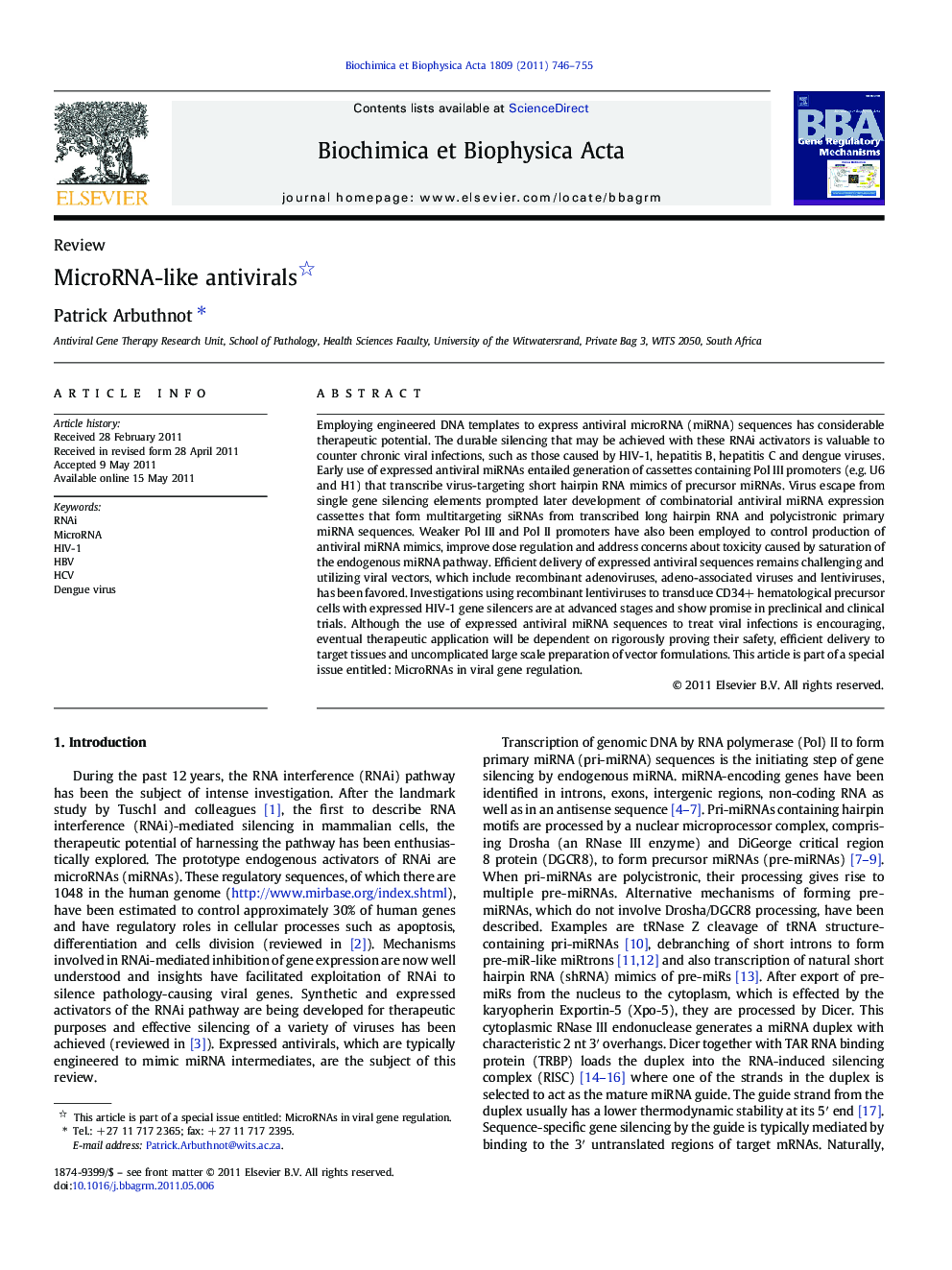| Article ID | Journal | Published Year | Pages | File Type |
|---|---|---|---|---|
| 1946617 | Biochimica et Biophysica Acta (BBA) - Gene Regulatory Mechanisms | 2011 | 10 Pages |
Employing engineered DNA templates to express antiviral microRNA (miRNA) sequences has considerable therapeutic potential. The durable silencing that may be achieved with these RNAi activators is valuable to counter chronic viral infections, such as those caused by HIV-1, hepatitis B, hepatitis C and dengue viruses. Early use of expressed antiviral miRNAs entailed generation of cassettes containing Pol III promoters (e.g. U6 and H1) that transcribe virus-targeting short hairpin RNA mimics of precursor miRNAs. Virus escape from single gene silencing elements prompted later development of combinatorial antiviral miRNA expression cassettes that form multitargeting siRNAs from transcribed long hairpin RNA and polycistronic primary miRNA sequences. Weaker Pol III and Pol II promoters have also been employed to control production of antiviral miRNA mimics, improve dose regulation and address concerns about toxicity caused by saturation of the endogenous miRNA pathway. Efficient delivery of expressed antiviral sequences remains challenging and utilizing viral vectors, which include recombinant adenoviruses, adeno-associated viruses and lentiviruses, has been favored. Investigations using recombinant lentiviruses to transduce CD34+ hematological precursor cells with expressed HIV-1 gene silencers are at advanced stages and show promise in preclinical and clinical trials. Although the use of expressed antiviral miRNA sequences to treat viral infections is encouraging, eventual therapeutic application will be dependent on rigorously proving their safety, efficient delivery to target tissues and uncomplicated large scale preparation of vector formulations. This article is part of a special issue entitled: MicroRNAs in viral gene regulation.
Research highlights► Use of miR-like sequences to silence viral replication is discussed. ► Durable virus gene silencing may be achieved from antiviral miR expression cassettes. ► Multitargeting combinatorial miR expression cassettes limit viral escape. ► Antiviral miR-encoding sequences are compatible with recombinant viral vectors. ► Before antiviral miR therapy is realized, delivery and safety concerns need to be addressed.
